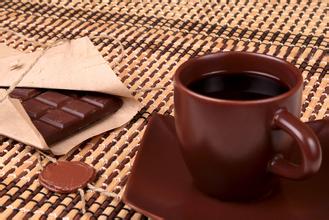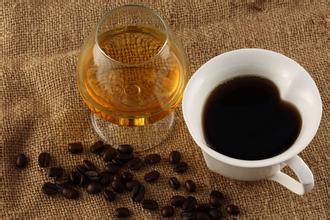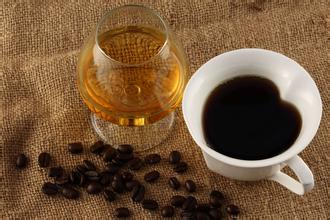Jamaica Blue Mountain Coffee Manor
True Blue Mountain coffee is said to be made from the best green coffee beans in the region, and that's where the fun of tasting home lies. Its rich flavor, balance, rich fruit flavor and sour, can meet people's various needs. In addition, the flavor of high-quality fresh Blue Mountain coffee is particularly long-lasting, as drinkers say-endless aftertaste.
A closer look at the myth of Blue Mountain coffee is necessary because images of the past and reality of today often do not coincide. In 1725 Sir Nicholas Lawes brought the first Blue Mountain coffee seeds from Martinique to Jamaica, where they were planted in St Andrew. Today St. Andrew's is still one of the top three growing regions for Blue Mountain coffee, the other two being Portland and St. Thomas. Thomas) producing area. Within eight years, Jamaica exported more than 375 tons of pure coffee. Coffee production peaked in 1932, harvesting more than 15000 tons of coffee.
But by 1948, coffee quality had declined and Canadian buyers refused to renew the contract, so the Jamaica government set up the Coffee Industry Council to save the fate of premium coffee. By 1969, the situation had improved, as Japanese loans had improved the quality of production and thus secured the market. Even in 1969, Japanese coffee drinkers were willing to pay insurance for the coffee, but today it has reached the point of being a cult favorite.
By 1981, about 1500 hectares of land had been cleared for coffee in Jamaica, followed by investment in another 6000 hectares. In fact, today's Blue Mountain region is a small area of only 6000 hectares, and not all the coffee labeled "Blue Mountain" can be grown there. An additional 12000 hectares are devoted to growing two other types of coffee (non-Blue Mountain coffee): High Mountain Supreme and Jamaica Prime Washed Jamaican.
Jamaica Blue Mountain New Coffee Bean
The real Blue Mountain Coffee is one of the world's best grown coffees, and Jamaica's weather, geology and terrain combine to provide the ideal location. The ridge across Jamaica extends to the east of the island, and the Blue Mountains rise to more than 2100 meters. Cool, foggy weather and frequent rainfall have tempered this fertile land with rain. Here coffee trees are grown in mixed cropping, alongside banana and avocado trees on terraces.
Blue Mountain coffee is also grown on small estates such as Wallenford Estate, Silver Hill Estate, and J. Martinez's Atlanta Estate. Even the largest planters in the region are small-scale farmers by international standards, many of whom are smallholders whose families have worked the land for two centuries. The coffee industry in Jamaica faces a number of problems, such as the effects of hurricanes, increased labor costs and difficulties in mechanizing terraces. Many small estates and farms are difficult to rationalize

Important Notice :
前街咖啡 FrontStreet Coffee has moved to new addredd:
FrontStreet Coffee Address: 315,Donghua East Road,GuangZhou
Tel:020 38364473
- Prev

What are the coffee producing areas in Africa? la Souna Wahana Manor
Tanzania gourmet coffee has soft acidity and attractive aroma, which is absolutely worth enjoying. The coffee export of Tanzania plays an important role in the whole national economy. Bean-shaped berry coffee is very productive and is said to be more fragrant than ordinary coffee. Zambia is lighter than Kenyan coffee and is suitable for drinking in the afternoon. Coffee was introduced from Kenya and Tanzania in the early 20th century.
- Next

Introduction of Rose Summer Coffee Manor in Ethiopia
In 1931, he obscure exported Kenya from Geisha Mountain Mountain in southwestern Ethiopia to Tanzania and Costa Rica, then transplanted to Panama in the 1960s, and then went through nearly half a century before he became a blockbuster, defeating the victorious armies such as Bourbon, Kaddura, Kaduai, Tibica and so on, winning 2005 in one breath.
Related
- Does Rose Summer choose Blue, Green or Red? Detailed explanation of Rose Summer Coffee plots and Classification in Panamanian Jade Manor
- What is the difference between the origin, producing area, processing plant, cooperative and manor of coffee beans?
- How fine does the espresso powder fit? how to grind the espresso?
- Sca coffee roasting degree color card coffee roasting degree 8 roasting color values what do you mean?
- The practice of lattes: how to make lattes at home
- Introduction to Indonesian Fine Coffee beans-- Java Coffee producing area of Indonesian Arabica Coffee
- How much will the flavor of light and medium roasted rose summer be expressed? What baking level is rose summer suitable for?
- Introduction to the characteristics of washing, sun-drying or wet-planing coffee commonly used in Mantenin, Indonesia
- Price characteristics of Arabica Coffee Bean Starbucks introduction to Manning Coffee Bean Taste producing area Variety Manor
- What is the authentic Yega flavor? What are the flavor characteristics of the really excellent Yejasuffi coffee beans?

